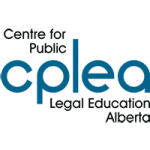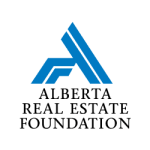Every condo owner must pay condominium contributions (also known as condominium fees) to the condominium corporation. These contributions go towards the corporation’s:
Potential Purchasers: What you need to consider
Before you purchase a condo, think about the following questions.
Are you planning to use all of the complex’s amenities?
Consider how much you’ll pay in condominium contributions (fees) in comparison to the amenities provided. If you aren’t planning to use many of the amenities (for example, fitness centre, swimming pool) then you may want to look for a similar unit in a condominium with fewer amenities and lower contributions.
Do the contributions seem low compared to other properties?

Be wary if you’re looking at a condominium with many services and unusually low monthly contributions. This may be a sign that the condominium corporation doesn’t have enough money in its reserve fund to cover future repair and replacement costs. Ask your lawyer and document reviewer to look over the corporation’s documents to see if the corporation has a history of special levies and whether there is adequate money in the reserve fund.
Does the seller have unpaid contributions?

Always ask for an estoppel certificate before making an offer to purchase on a unit. It will indicate whether the current owner has paid contributions in full or if any fees are unpaid. If you purchase a unit with unpaid contributions, any unpaid fees transfer to the new owner so they will become your responsibility.
How are contributions calculated?
The condominium board usually sets condominium contributions (fees) annually after considering all of the operating and reserve fund needs of the condominium. The total amount needed to cover the condominium’s expenses is split amongst the unit owners based on the unit factor assigned to their specific unit, unless the bylaws specify another method. Unit factors are typically proportional to the size of the unit and increase with the size of the unit. If you’re unsure of how unit factors are assigned in your condominium, check the schedule attached to your condominium plan.

Be aware that the condo board can increase condominium contributions. As operating expenses increase, contributions will increase. If more money is needed to increase the reserve fund, the condo board can decide to either increase contributions or levy a special levy.
What happens if contributions are unpaid?
As a unit owner, it is your responsibility to pay your condominium contributions in full and on time. If you don’t pay your contributions, the condo board could take any of the following actions:
- charge interest on the unpaid amount (up to 18% per year)
- sue you for the unpaid amount, plus any interest and legal costs
- if you have a mortgage, ask your mortgage company to pay the outstanding amount (note: many banks consider failure to pay condo contributions as an act of default that could result in foreclosure)
- if you have a tenant in your unit, require them to pay rent to the condominium corporation to cover the unpaid amount
- file a caveat against your property title
- foreclose on the title to your unit
![]() A corporation that registers a caveat for unpaid contributions can recover from the owner all reasonable expenses for the caveat. For example, this could include caveat registration and discharge costs, plus legal fees.
A corporation that registers a caveat for unpaid contributions can recover from the owner all reasonable expenses for the caveat. For example, this could include caveat registration and discharge costs, plus legal fees.
How do I get information about condo contributions?
When an owner, purchaser, mortgagee, or their lawyer makes a request in writing for an estoppel certificate, the condominium board must provide it.
An estoppel certificate is a document that contains information on the condominium unit’s contributions such as:
- The amount of the contribution
- How the contribution is payable
- How much contribution the owners has paid and
- The interest owing on any unpaid contribution
If an owner, purchaser, or mortgagee of a unit makes a request in writing for a statement about unit contributions, the corporation must meet that request within 10 days after receiving the request.

The corporation may charge up to $200 for providing an estoppel certificate.
Further Resources
Condo Insight: The Condo’s Lifeblood (Maria Bartolotti)
Last updated: June 2022


